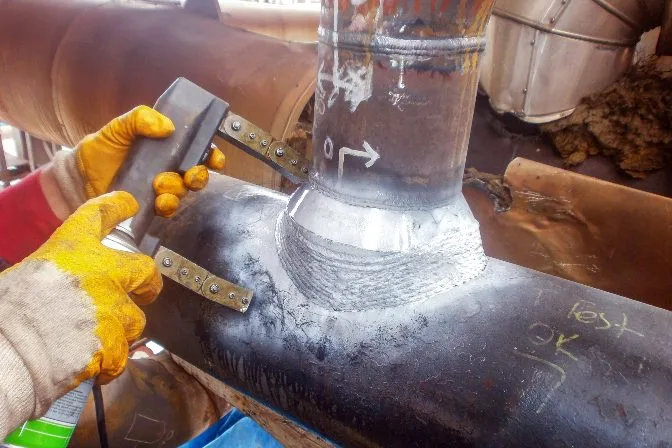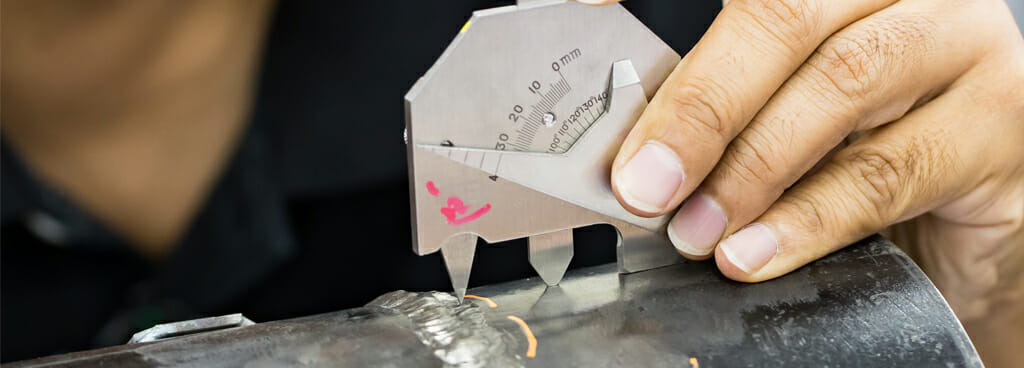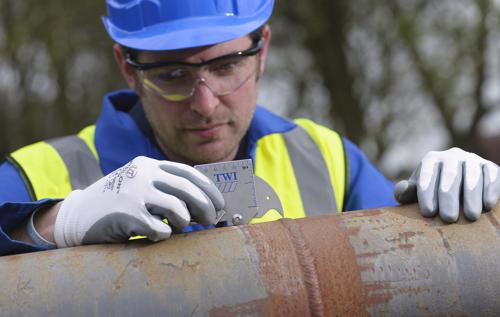Exploring the Basics of Welding Inspection: A Thorough Assessment of Procedures, Devices, and the Relevance of Quality Assurance in Welding Industries
Welding evaluation offers as a foundation in the upkeep of security and architectural integrity throughout numerous markets. By checking out the vital processes and devices utilized in these assessments, one can value the elaborate equilibrium between high quality control and conformity with well established standards from organizations such as AWS and ANSI. The approaches used, including visual and non-destructive screening techniques, are critical in identifying imperfections that could jeopardize the longevity of welded structures. Understanding the ramifications of these techniques elevates important concerns regarding their performance and the future instructions of quality assurance in welding.
Value of Welding Assessment
Welding examination plays an important function in making sure the stability and security of bonded frameworks. It works as a methodical technique to examining weld high quality, determining prospective problems, and guaranteeing compliance with established standards and requirements. The relevance of welding examination expands beyond simple adherence to policies; it is critical in safeguarding human lives and protecting financial investments in framework.
Faulty welds can result in catastrophic failings, causing considerable economic losses, injury, or loss of life. Extensive inspection procedures are vital to detect concerns such as insufficient infiltration, porosity, or cracks prior to they intensify right into important failures. In addition, efficient welding inspection adds to the total efficiency and longevity of frameworks, ensuring that they can endure the problems for which they were developed.
Moreover, the execution of welding assessment promotes a society of top quality and accountability within the welding sector. By prioritizing assessment, companies demonstrate their dedication to quality, thus enhancing their track record and competitiveness in the market. Inevitably, welding evaluation is not just a procedural step yet a fundamental element of design integrity and security guarantee, important for the effective implementation of welding projects across numerous sectors.
Key Assessment Processes
A comprehensive technique to welding examination involves a number of vital processes that are necessary for ensuring weld quality and structural stability. The very first essential process is visual assessment, which permits inspectors to recognize surface area defects such as splits, porosity, and inappropriate bead look. This technique works as an initial assessment to ensure that the weld satisfies specified standards.

Additionally, harmful testing may be done on example welds to examine their mechanical residential or commercial properties and performance under anxiety. This procedure entails tensile, tiredness, and impact screening to confirm that the weld can hold up against functional conditions.
Lastly, documents and coverage are crucial elements of the inspection process. Keeping precise documents of assessments, observations, and examination results assists guarantee conformity with market standards and facilitates consistent renovation in welding methods. Jointly, these vital processes create the backbone of efficient welding evaluation and top quality assurance.
Devices for Weld Examination
Many devices are important for effective weld assessment, each created to assess different facets of weld top quality and performance. Amongst one of the most widely made use of are visual assessment devices, including visit here magnifying glasses and borescopes, which enable examiners to identify surface area issues such as fractures, porosity, and inappropriate combination.
Furthermore, ultrasonic screening (UT) tools is crucial for finding internal flaws. This tool utilizes high-frequency sound waves to expose interruptions within the weld, making certain the stability of the material. Radiographic screening (RT) tools, which utilize X-rays or gamma rays, likewise give understanding into the internal structure of welds, enabling for the recognition of gaps or incorporations.
For accurate measurements, calipers and assesses play a significant duty in establishing weld dimensions and making sure adherence to defined resistances. Solidity testers examine the mechanical residential properties of the weld, guaranteeing it fulfills efficiency standards.

Strategies for Evaluating Quality
How can the high quality of welds be dependably assessed? A range of methods are employed to examine weld integrity and ensure adherence to defined criteria. Aesthetic assessment is the most essential technique, allowing examiners to identify surface area problems such as splits, porosity, or undercutting. This non-destructive method functions as a preliminary assessment prior to advanced techniques are utilized.
Ultrasonic testing (UT) is one more prominent method that uses high-frequency audio waves to spot inner flaws within the weld. Houston Welding Inspection. This technique provides a detailed view of the weld's stability without endangering its structural honesty. Furthermore, radiographic testing (RT) uses X-rays or gamma rays to reveal interior issues, offering in-depth understandings right into weld quality
Magnetic bit testing (MT) is efficient for identifying surface and near-surface interruptions in ferromagnetic materials, utilizing magnetic areas and tinted particles to highlight problems. Last but not least, color penetrant testing (PT) can be utilized to discover surface-breaking imperfections by applying a dye that leaks right into splits and is ultimately disclosed.
Conformity With Industry Criteria
Compliance with market requirements is critical for making certain the quality and safety of welded structures. These requirements, established by organizations such as the American Welding Society (AWS) and the American National Standards Institute (ANSI), provide standards that control the welding process, products, and inspection protocols. Complying with these standards not only ensures the structural integrity of welds but also mitigates risks connected with failings that can bring about tragic effects.
" />
Welding examiners are tasked with verifying conformity with these criteria throughout the welding process (Houston Welding Inspection). This involves assessing welding treatments, checking welder credentials, and carrying out extensive evaluations of the final product. Non-compliance can cause considerable financial effects, task delays, and damages to a business's credibility
Furthermore, conformity promotes a society of quality assurance within the company. By developing clear assumptions and criteria, business can preserve consistency in their result and improve overall performance. Normal training and updates on criteria are necessary to keep employees educated and knowledgeable, making sure that all aspects of welding procedures meet or exceed regulatory needs. Eventually, dedication to industry standards acts as a foundation for excellence in the welding sector, advertising security and dependability in welded frameworks.

Final Thought
In final thought, welding evaluation serves as an essential component in preserving the safety and honesty of bonded frameworks. Adherence to market standards makes sure conformity and promotes a society of top quality within the welding sector.
In addition, the execution of welding assessment promotes a culture of quality and accountability within the welding industry. Inevitably, welding assessment is not simply a step-by-step step however a basic component of engineering stability and safety and security guarantee, important for the effective implementation of welding tasks across various markets.
A thorough approach to welding evaluation includes numerous vital processes that are vital for making sure weld top quality and architectural integrity. These standards, established by organizations such as the American Welding Society (AWS) and the American National Specification Institute (ANSI), give standards that control the welding procedure, products, and inspection protocols.Welding inspectors are tasked with verifying compliance with these requirements throughout the welding process.